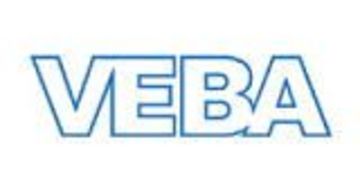Gelsenkirchener Bergwerks-AG
Brand
Gelsenkirchener Bergwerks-AG (GBAG) was a German mining company with headquarters in Gelsenkirchen and later Essen. The company was founded January 3, 1873 with a share capital of 4.5 million thaler. For a price of 4.2 million thaler company bought stenkulslejerne Rheinelbe and Alma, who was in the municipalities Uckendorf, Leithe, Gelsenkirchen, Bulmke, Hüllen, and Röhlinghausen.
The company's original goal was to bring all wholly or partly foreign-owned coal mines in Gelsenkirchen under German management. Following the acquisition of "Aachener Hütten-Aktien-Vereins Rothe Erde " and "Schalker Gruben- und Hüttenverein" AG in 1907 was GBAG the German mining company that produced the most coal. In 1916 "Hüstener Gewerkschaft" was also purchased.
Subject ID: 70838
MoreGelsenkirchener Bergwerks-AG (GBAG) was a German mining company with headquarters in Gelsenkirchen and later Essen. The company was founded January 3, 1873 with a share capital of 4.5 million thaler. For a price of 4.2 million thaler company bought stenkulslejerne Rheinelbe and Alma, who was in the municipalities Uckendorf, Leithe, Gelsenkirchen, Bulmke, Hüllen, and Röhlinghausen.
The company's original goal was to bring all wholly or partly foreign-owned coal mines in Gelsenkirchen under German management. Following the acquisition of "Aachener Hütten-Aktien-Vereins Rothe Erde " and "Schalker Gruben- und Hüttenverein" AG in 1907 was GBAG the German mining company that produced the most coal. In 1916 "Hüstener Gewerkschaft" was also purchased.
In December 1933, the coal mines spun off into an independent subsidiary of Vereinigten Stahlwerke with the traditional name Gelsenkirchener Bergwerks-AG. The 'new' GBAG were divided into four groups, which had its own administration (Stand 1936):
- Group Dortmund MEDT shaft 8 active plant (producing 28,300 t/d) Erin, Westhausen, Hansa, Adolf von Hansmann, Zollern 1/3, 2/4 Zollern, Minister Stein, and Fürst Hardenberg. The administration was in the former Union AG für Bergbau, Eisen und Stahl-Industries administration building.
- Bochum group having 6 active chute plant (production 19,400 t/d) Bruchstraße, Dannenbaum, Prinzregent, Friedlicher Nachbar, Engelenburg, and Carolinenglück.
- Gelsenkirchen group having 6 fixed shaft (37,500 production t/d) Northern Stern, Graf Moltke, Netherlands, Pluto, Zollverein 12, and Boniface.
- Hamborn group having 5 active chute plant (production 27,200 t!d): Friedrich Thyssen 4/8, West End, Beekerwerth, Friedrich Thyssen 2/5, and Lohberg.
In 1940, the issued shares in a subsidiary Gelsenberg Gasoline (Benzin), whose purpose and owners stated: Production of coal-based fuels. It was founded December 18, 1936, and all shares belonged to the founders: Vereinigte Stahlwerke AG, Düsseldorf; Gelsenkirchener Bergwerks-AG Essen August-Thyssen-Hütte AG, Duisburg-Hamborn, Bochumer Verein für Gußstahlfabrikation AG, Bochum, Dortmund Hørder Hüttenverein -AG, Dortmund. The enterprise was after the war changed to deal with gasoline and oil in the former VEBA, later E. ON.
In connection with the Allies after World War 2. fragmented mining industry in smaller units were GBAG revived in 1953 as a pure holding company. Was formed separate companies of the former groups, not all of which were viable. In 1962, the group employed 66,000 people and had an annual turnover of 3 billion DM.
From 1965, revenue declined and employment. Parts of the company later became part of the Thyssen group , RWE and E. ON.
Finally came the name change to Gelsenberg AG and the company was acquired in 1975 by VEBA.
Subject ID: 70838
Subject ID: 70838
